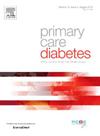调查荷兰2型糖尿病和心血管疾病高危人群在处方新型糖尿病药物方面的社会经济差异。
IF 2.6
4区 医学
Q3 ENDOCRINOLOGY & METABOLISM
引用次数: 0
摘要
目的:本研究旨在分析新型糖尿病药物的处方模式,并评估具有非常高心血管风险的2型糖尿病患者的社会经济差异。方法:根据全科医生的电子健康记录数据,确定诊断为T2DM且心血管风险极高的个体(N = 10,768)。检测SGLT-2is和GLP-1RAs处方模式。此外,我们还研究了SES与2022年SGLT-2is和GLP-1RAs处方之间的关系。结果:尽管SGLT-2is和GLP-1RAs的处方率在2019年至2022年期间有所增加,但大约85% %和93% %的符合条件的个体在2022年分别没有接受SGLT-2is和GLP-1RAs。我们发现sglt -2处方与SES之间的正相关仅在第4五分位数与第1五分位数(参考)在完全调整模型中(OR 1.29 95 % CI:1.08-1.54)。结论:符合条件的个体的处方率突出了在调整处方实践与指南方面的显著改进空间。我们发现SGLT-2is和GLP-1RAs的起始没有深刻的社会经济梯度。后者可能是由于指南明确指出了符合条件的人群和全科医生教育。应监测未来的发展和在开始和维持方面的潜在差距,以确保公平的处方。本文章由计算机程序翻译,如有差异,请以英文原文为准。
Investigating socioeconomic disparities in prescribing new diabetes medications in individuals with type 2 diabetes and very high cardiovascular risk in the Netherlands
Aims
This study aims to analyze prescription patterns of new diabetes medication and assess socioeconomic disparities in their initiation among individuals with T2DM with very high cardiovascular risk.
Methods
Individuals diagnosed with T2DM and very high cardiovascular risk were identified (N = 10,768) based on general practitioner’s electronic health record data. SGLT-2is and GLP-1RAs prescription patterns were examined. Furthermore, the association between SES and the prescription of SGLT-2is and GLP-1RAs in 2022 was investigated.
Results
Despite the increase in prescription rates of SGLT-2is and GLP-1RAs between 2019 and 2022, approximately 85 % and 93 % of eligible individuals did not receive SGLT-2is and GLP-1RAs in 2022, respectively. We found a positive association between SGLT-2is prescription and SES in only the 4th quintile compared to 1st quintile (referent) in the fully adjusted model (OR 1.29 95 % CI:1.08–1.54).
Conclusions
The prescription rates among eligible individuals highlight significant room for improvement in aligning prescribing practices with guidelines. We found no profound socioeconomic gradient in initiation of SGLT-2is and GLP-1RAs. The latter may be due to guidelines’ clear indication of the eligible population and GP education. Future development and potential disparities in initiation and maintenance should be monitored to ensure equitable prescribing.
求助全文
通过发布文献求助,成功后即可免费获取论文全文。
去求助
来源期刊

Primary Care Diabetes
ENDOCRINOLOGY & METABOLISM-PRIMARY HEALTH CARE
CiteScore
5.00
自引率
3.40%
发文量
134
审稿时长
47 days
期刊介绍:
The journal publishes original research articles and high quality reviews in the fields of clinical care, diabetes education, nutrition, health services, psychosocial research and epidemiology and other areas as far as is relevant for diabetology in a primary-care setting. The purpose of the journal is to encourage interdisciplinary research and discussion between all those who are involved in primary diabetes care on an international level. The Journal also publishes news and articles concerning the policies and activities of Primary Care Diabetes Europe and reflects the society''s aim of improving the care for people with diabetes mellitus within the primary-care setting.
 求助内容:
求助内容: 应助结果提醒方式:
应助结果提醒方式:


